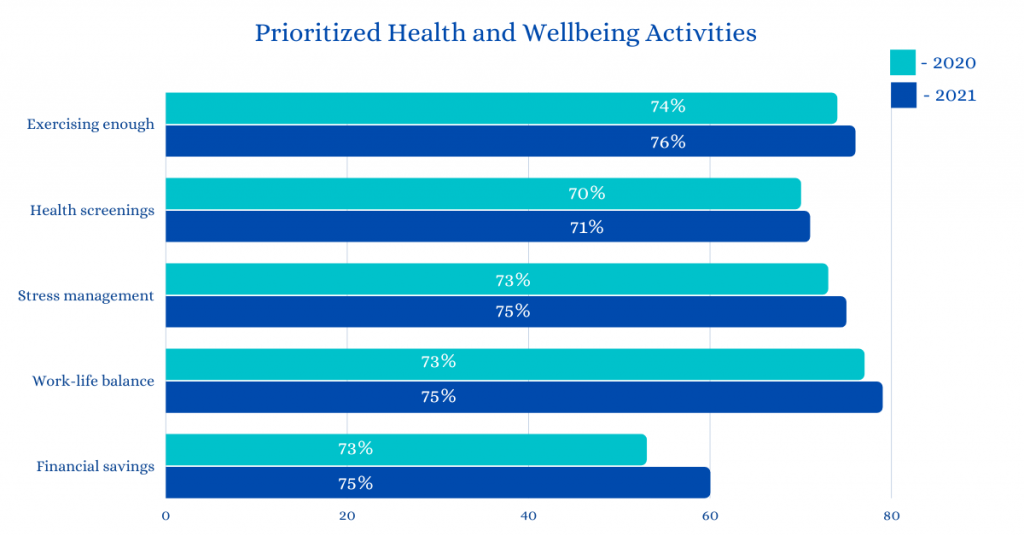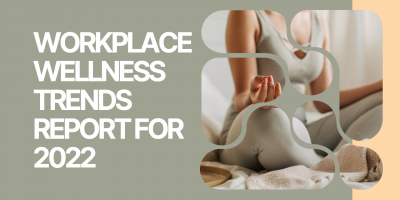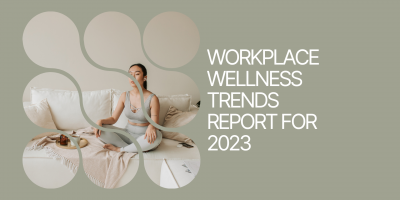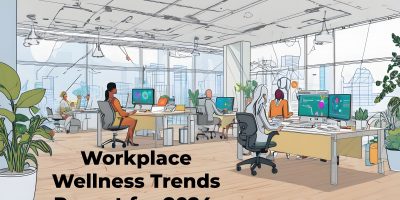
Humana Work Life & EAP: 14 Alternatives for Consumers
Explore alternatives to Humana’s EAP and work-life services, providing consumers with a list of the top vendors offering EAP and work-life benefits.

Thanks to COVID-19, the past two years have completely revved the workplace wellness trends. While employers have started taking employee wellbeing seriously, the workforce’s expectations of workplace benefits have changed. The pandemic has shifted the focus on crucial benefits and employee engagement strategies that have been ignored for a long time.
Employers should align their company policies with the latest employee wellbeing trends to meet their workforce’s health and wellbeing demands. Knowing the newest trends can help employers make crucial decisions about investing in their workplace wellness programs.
When the wellness dollars are invested in the right modules and features of the workplace wellbeing programs, it will boost engagement and ROI.
Here is a quick glimpse of the investment trends of workplace wellbeing programs for 2022.
Research by many renowned organizations shows coinciding outcomes of the latest employee health and wellbeing needs. Employers must take account of these factors and make sure it meets their workplace wellbeing needs.
Fidelity Investments and BGH surveyed around 166 giant, large, and medium-sized companies to understand the investment trends of employee wellness programs.
According to the study, 80% of the participants agreed that DEI or Diversity, Equity, and Inclusion programs influenced their workplace wellbeing strategies.
In 2020, the average budget for employee wellness programs was $4.9 million. However, the total budget grew about 22% to reach an average budget of $6 million in 2021.
In large companies with more than 20,000 workers, the average budget per employee increased from $230 in 2020 to $238 in 2021.

With the changing employee health and wellbeing needs, employers are revamping their workplace policies. A few years ago, employee benefits commonly included healthcare reimbursements, HSAs, retirement plans, life insurance, etc.
For a few years only, employers have started considering employee health and wellbeing aspects for their workplace benefits packages. However, even this was limited to physical fitness and healthy eating elements.
Recent times have seen a lot of changes in health and wellbeing facets, especially since the pandemic. Focusing on holistic health dimensions has become more vital than ever.
The pandemic has affected employee mental health, financial wellbeing, and social wellness in many different ways, throwing light on their significance.
The remote working situations, juggling multiple responsibilities, economic drop, and other uncertainties have made employees realize the need for strong physical and mental health. Also, poor health has impacted employee engagement, productivity, and overall business, forcing employers to rethink their employee wellbeing initiatives.
Almost 48.4% of employees said the heavy workload caused mental stress. 35.7% of employees cited disturbed work-life balance as the primary reason for mental stress. Also, 40.5% said job security concerns caused stress.
Compared to the other working generations, Millennials recorded high burnout feelings. While 59% of Millennials experienced burnout in 2021, a steady increase from 53% in 2020, 58% of the Gen Z group followed suit in 2021.
Owing to all these stressors and other wellbeing factors, employees and employers have started taking stern measures to address them.
An online survey conducted to understand the health and wellbeing activities prioritized by employees during 2020 and 2021 revealed the top ones:

The changing health and wellbeing priorities must be considered and addressed through the best-suited workplace wellness program modules. Many employers have started redefining their employee benefits and perks packages to meet their workforce’s expectations.
Some key parameters considered by businesses to improve employee health and wellbeing in 2022 are:
Senior Content Developer at Wellness 360 Technologies
Browse our curated list of vendors to find the best solution for your needs.
Subscribe to our newsletter for the latest trends, expert tips, and workplace insights!

Explore alternatives to Humana’s EAP and work-life services, providing consumers with a list of the top vendors offering EAP and work-life benefits.

Explore Shortlister’s corporate wellness industry trends for 2022, addressed in collaboration with outstanding CEOs, HR practitioners, and wellness professionals.

Whether it’s through the use of technology, a focus on mental health, or a greater emphasis on DEI efforts, these workplace wellness trends provide exciting opportunities for businesses.

In a world reshaped by AI, cost pressures, and disengaged employees, which employee benefits strategies will help your business thrive in 2024?
Used by most of the top employee benefits consultants in the US, Shortlister is where you can find, research and select HR and benefits vendors for your clients.
Shortlister helps you reach your ideal prospects. Claim your free account to control your message and receive employer, consultant and health plan leads.